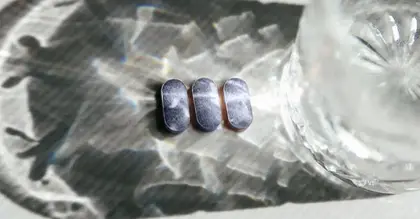Drug Detail:Tarceva (Erlotinib [ er-loe-ti-nib ])
Generic Name: ERLOTINIB HYDROCHLORIDE 25mg
Dosage Form: tablet
Drug Class: EGFR inhibitors
2.1 Selection of Patients with Metastatic NSCLC
Select patients for the treatment of metastatic NSCLC with TARCEVA based on the presence of EGFR exon 19 deletions or exon 21 (L858R) substitution mutations in tumor or plasma specimens [See http://www.fda.gov/CompanionDiagnostics.
Recommended Dose – NSCLC
The recommended daily dose of TARCEVA for NSCLC is 150 mg taken on an empty stomach, i.e., at least one hour before or two hours after the ingestion of food. Treatment should continue until disease progression or unacceptable toxicity occurs.
Recommended Dose – Pancreatic Cancer
The recommended daily dose of TARCEVA for pancreatic cancer is 100 mg taken once daily in combination with gemcitabine. Take TARCEVA on an empty stomach, i.e., at least one hour before or two hours after the ingestion of food. Treatment should continue until disease progression or unacceptable toxicity occurs [see Clinical Studies (14.5)].
2.4 Dose Modifications
|
||
|
Adverse Reactions |
||
|
Pulmonary* |
Interstitial Lung Disease (ILD) |
Discontinue TARCEVA |
|
During diagnostic evaluation for possible ILD |
Withhold TARCEVA† |
|
|
Hepatic* |
Severe hepatic toxicity that does not improve significantly or resolve within three weeks |
Discontinue TARCEVA |
|
In patients with pre-existing hepatic impairment or biliary obstruction for doubling of bilirubin or tripling of transaminases values over baseline |
Withhold TARCEVA† and consider discontinuation |
|
|
In patients without pre-existing hepatic impairment for total bilirubin levels greater than 3 times the upper limit of normal or transaminases greater than 5 times the upper limit of normal |
Withhold TARCEVA† and consider discontinuation |
|
|
Renal* |
For severe (CTCAE grade 3 to 4) renal toxicity |
Withhold TARCEVA† and consider discontinuation |
|
Gastrointestinal* |
Gastrointestinal perforation |
Discontinue TARCEVA |
|
For persistent severe diarrhea not responsive to medical management (e.g., loperamide) |
Withhold TARCEVA† |
|
|
Skin* |
Severe bullous, blistering or exfoliating skin conditions |
Discontinue TARCEVA |
|
For severe rash not responsive to medical management |
Withhold TARCEVA† |
|
|
Ocular* |
Corneal perforation or severe ulceration |
Discontinue TARCEVA |
|
For keratitis of (NCI-CTC version 4.0) grade 3-4 or for grade 2 lasting more than 2 weeks |
Withhold TARCEVA† |
|
|
For acute/worsening ocular disorders such as eye pain |
Withhold TARCEVA† and consider discontinuation |
|
|
Drug Interactions |
||
|
CYP3A4 inhibitors‡ |
If severe reactions occur with concomitant use of strong CYP3A4 inhibitors [such as atazanavir, clarithromycin, indinavir, itraconazole, ketoconazole, nefazodone, nelfinavir, ritonavir, saquinavir, telithromycin, troleandomycin (TAO), voriconazole, or grapefruit or grapefruit juice] or when using concomitantly with an inhibitor of both CYP3A4 and CYP1A2 (e.g., ciprofloxacin) |
Reduce TARCEVA by 50 mg decrements; avoid concomitant use if possible |
|
CYP3A4 inducers‡ |
Concomitant use with CYP3A4 inducers, such as rifampin, rifabutin, rifapentine, phenytoin, carbamazepine, phenobarbital, or St. John’s Wort |
Increase TARCEVA by 50 mg increments at 2-week intervals to a maximum of 450 mg as tolerated. Avoid concomitant use if possible |
|
Concurrent Cigarette Smoking ठ|
Concurrent cigarette smoking |
Increase TARCEVA by 50 mg increments at 2-week intervals to a maximum of 300 mg. Immediately reduce the dose of TARCEVA to the recommended dose (150 mg or 100 mg daily) upon cessation of smoking |
|
Proton Pump inhibitors |
Separation of doses may not eliminate the interaction since proton pump inhibitors affect the pH of the upper GI tract for an extended period |
Avoid concomitant use if possible |
|
H2-receptor antagonists |
If treatment with an H2-receptor antagonist such as ranitidine is required, separate dosing. |
TARCEVA must be taken 10 hours after the H2-receptor antagonist dosing and at least 2 hours before the next dose of the H2-receptor antagonist |
|
Antacids |
The effect of antacids on erlotinib pharmacokinetics has not been evaluated. |
The antacid dose and the TARCEVA dose should be separated by several hours, if an antacid is necessary |




